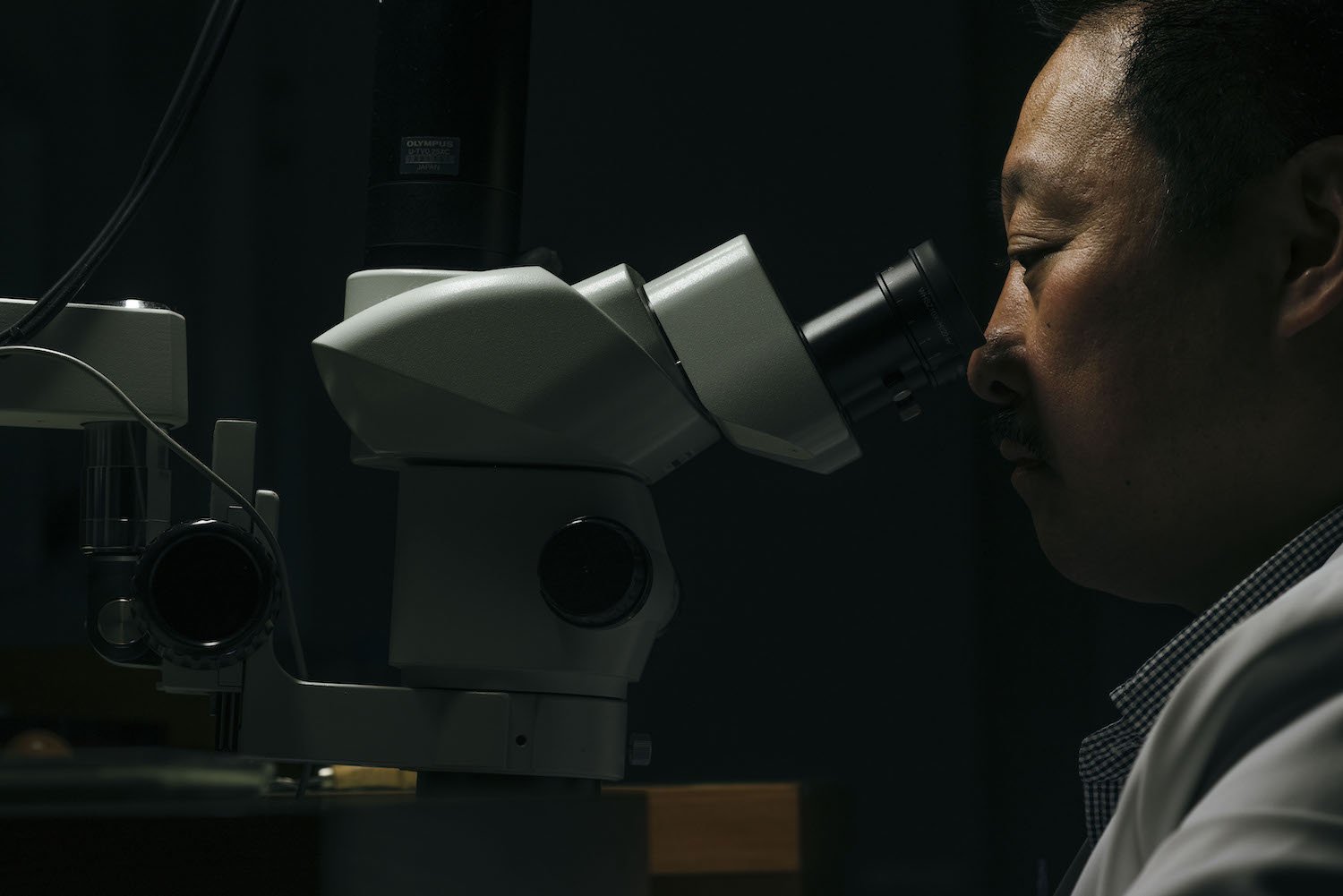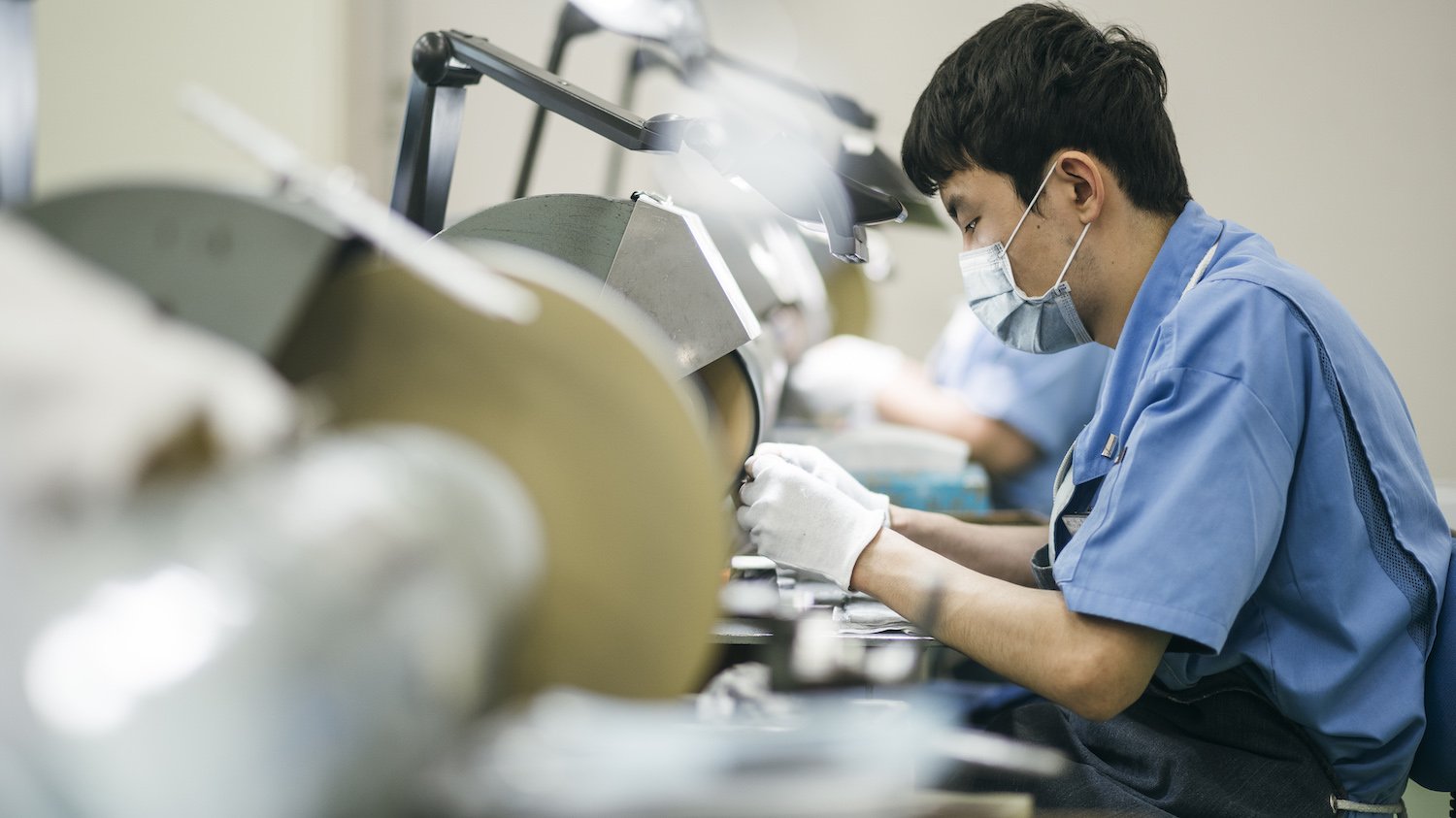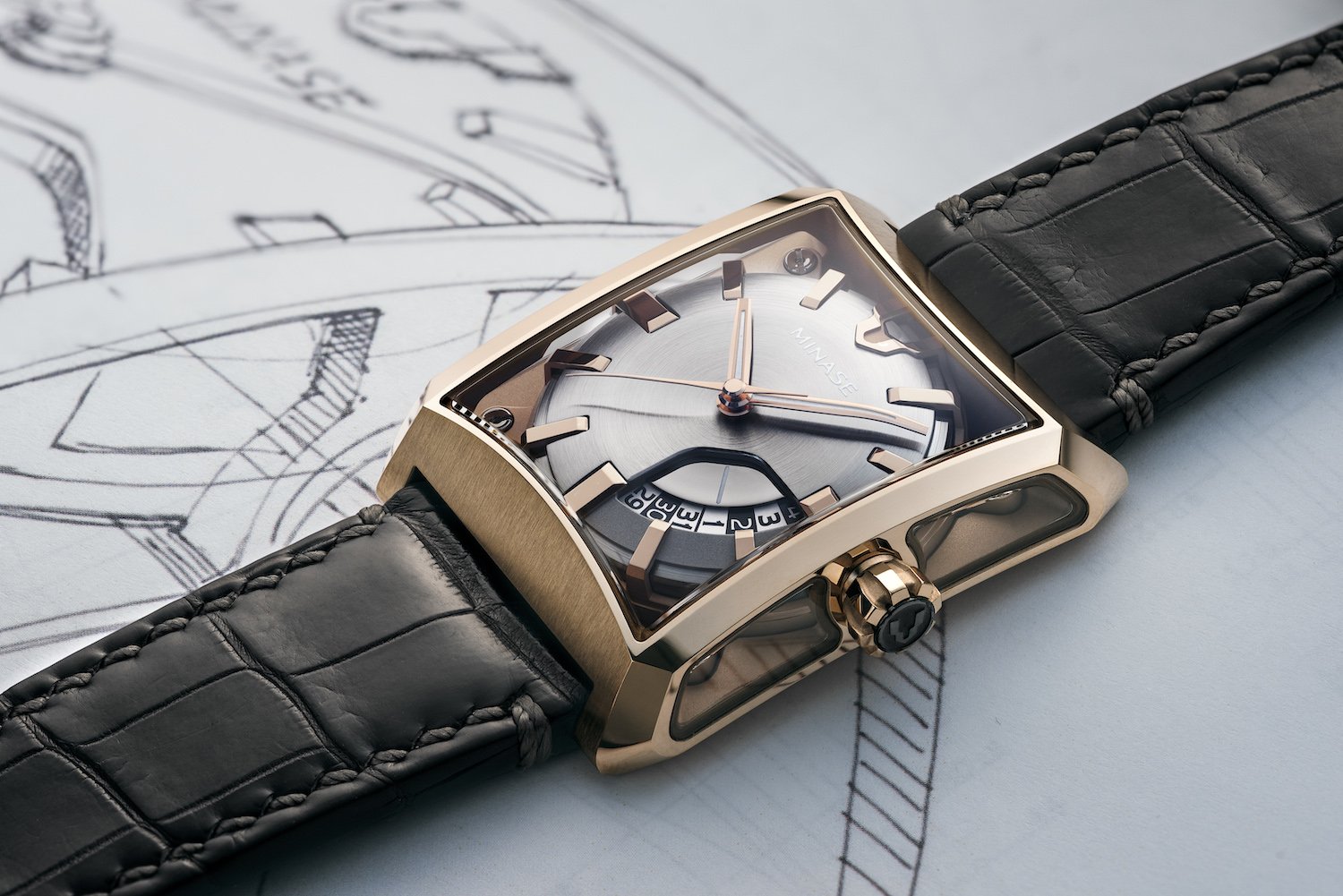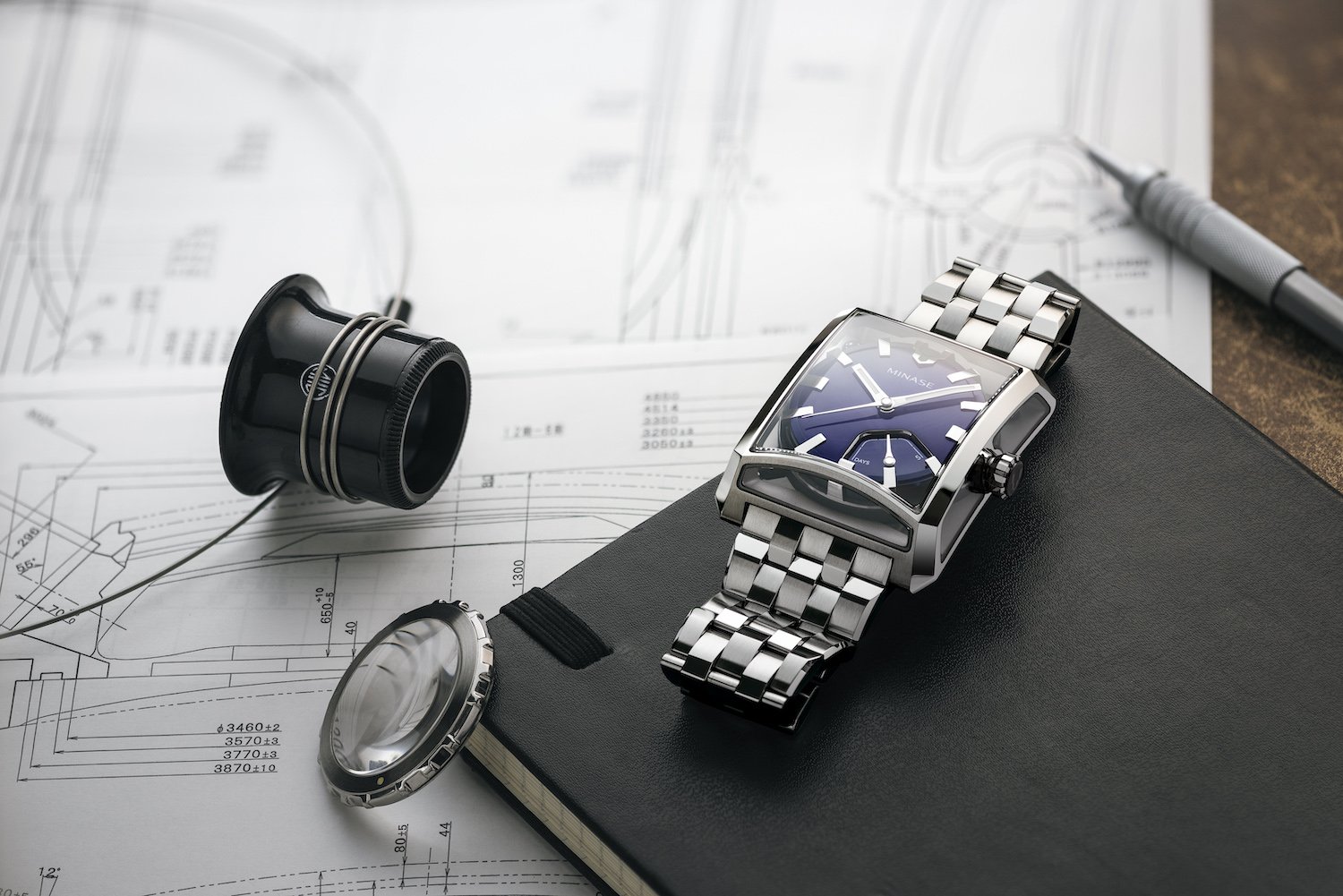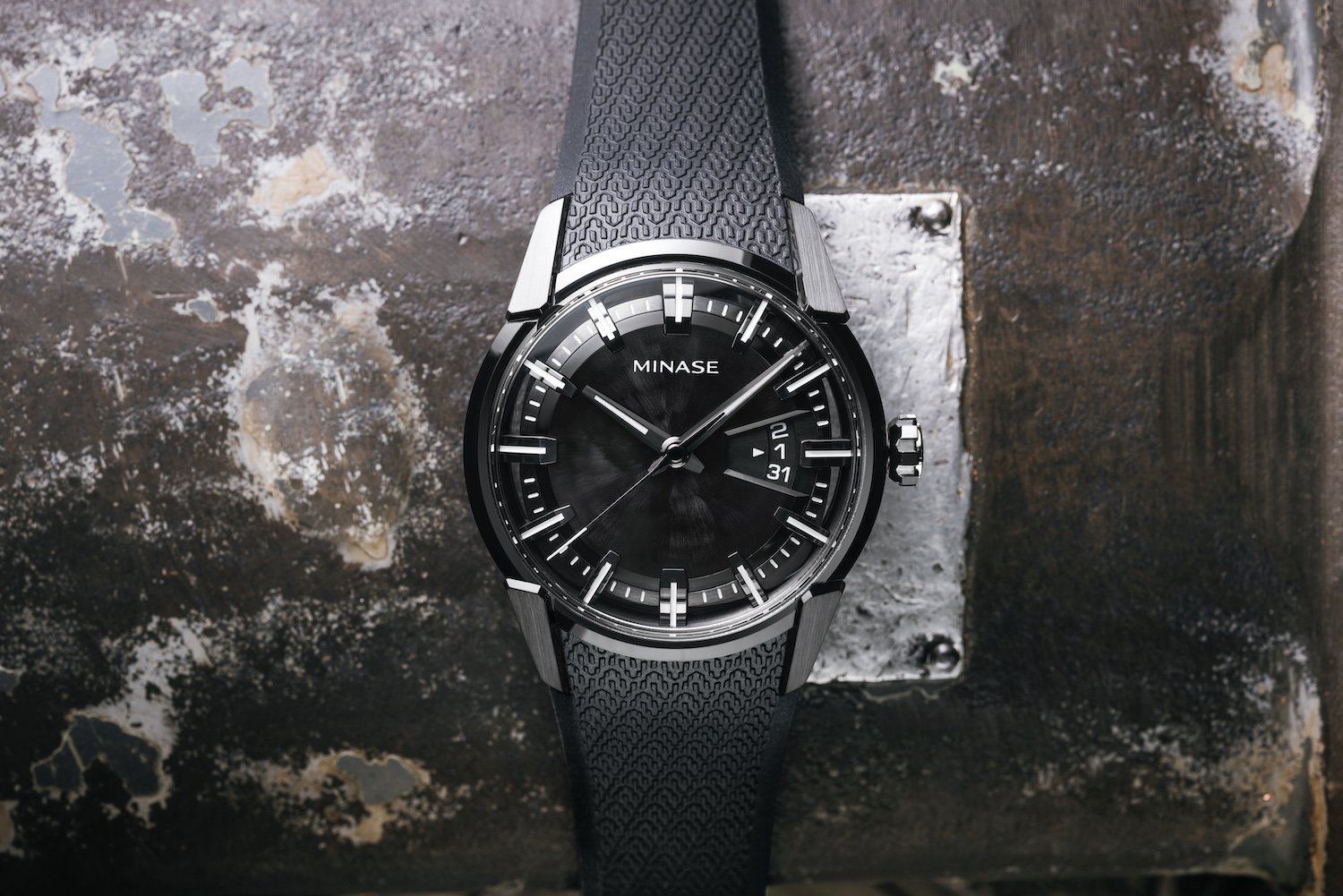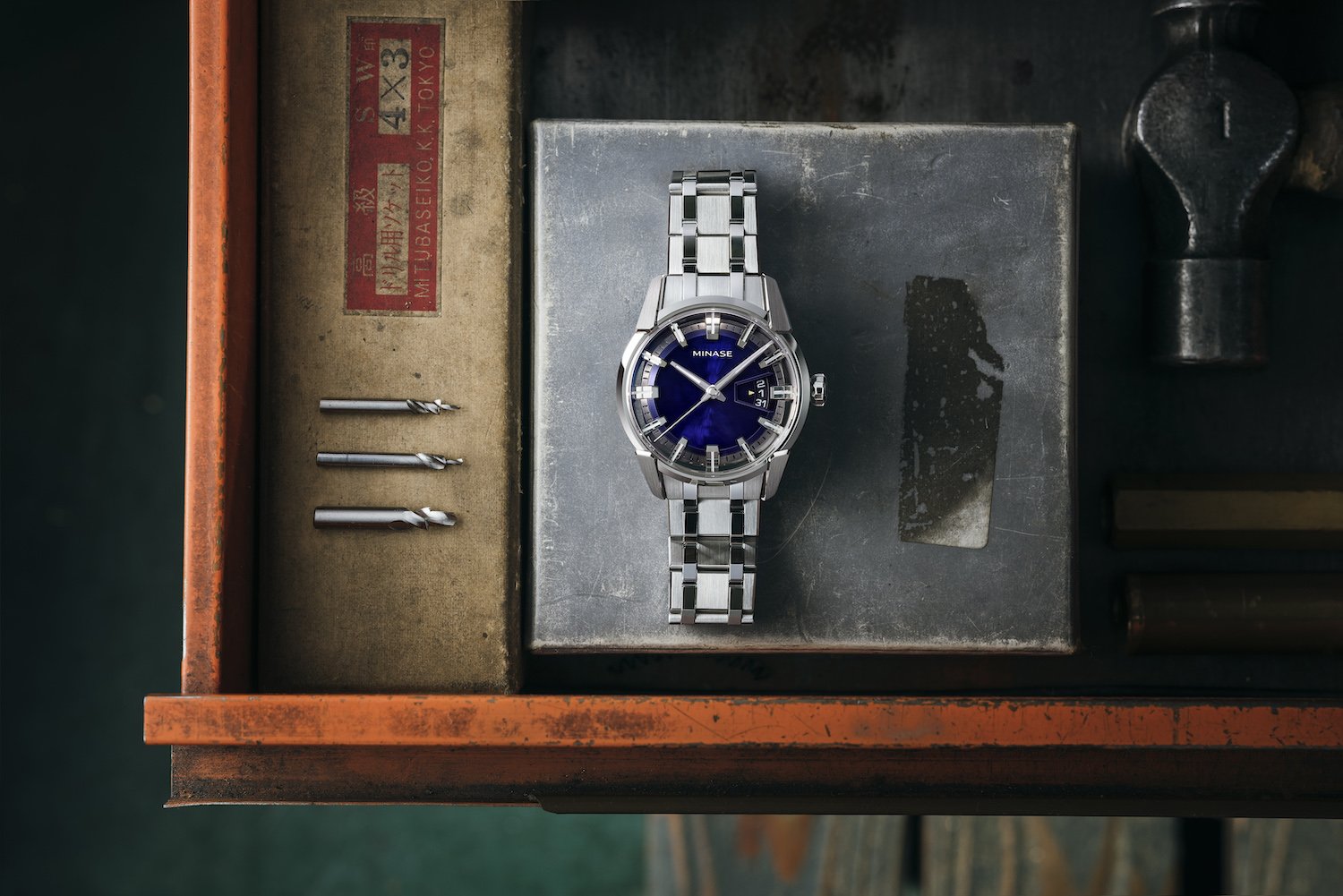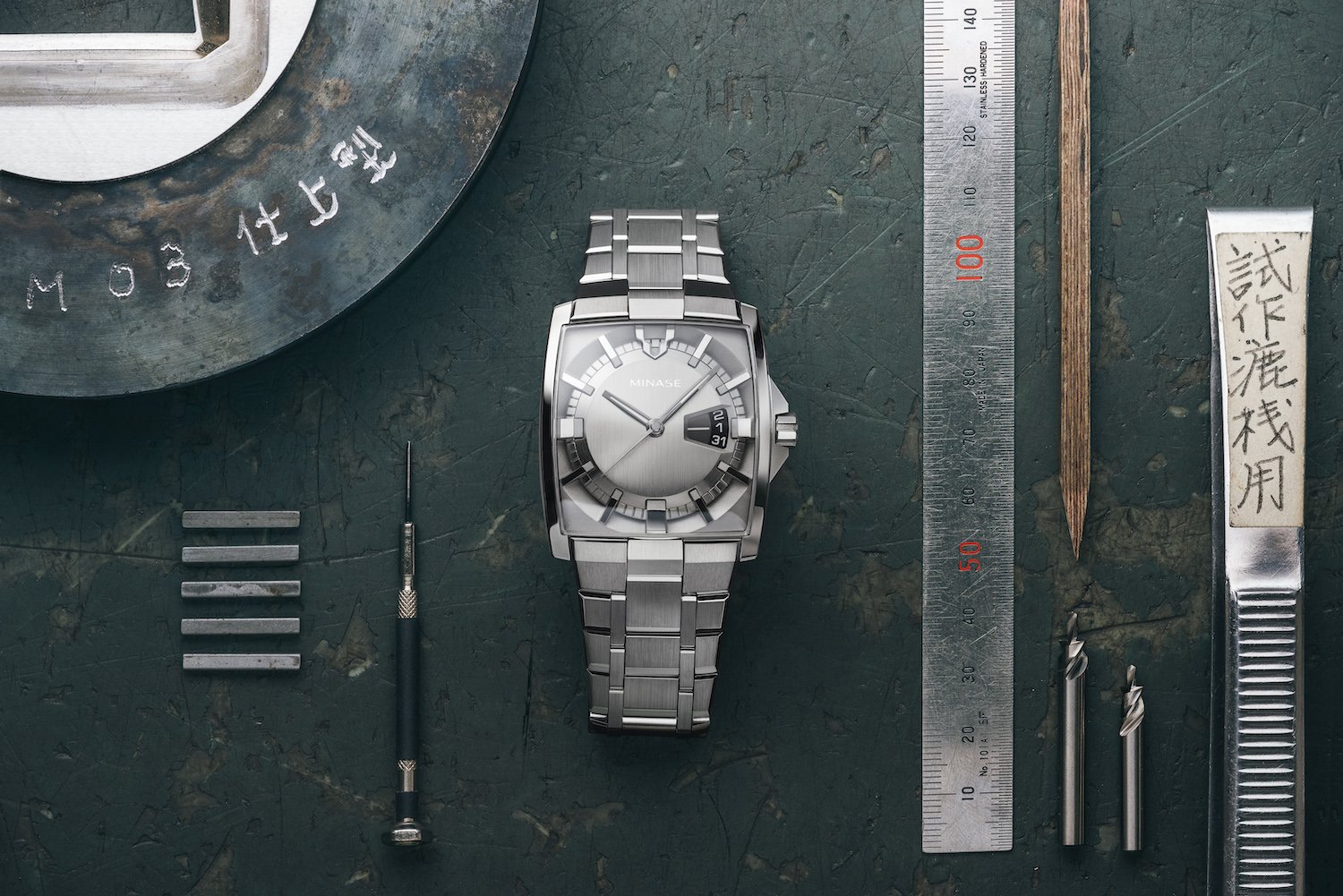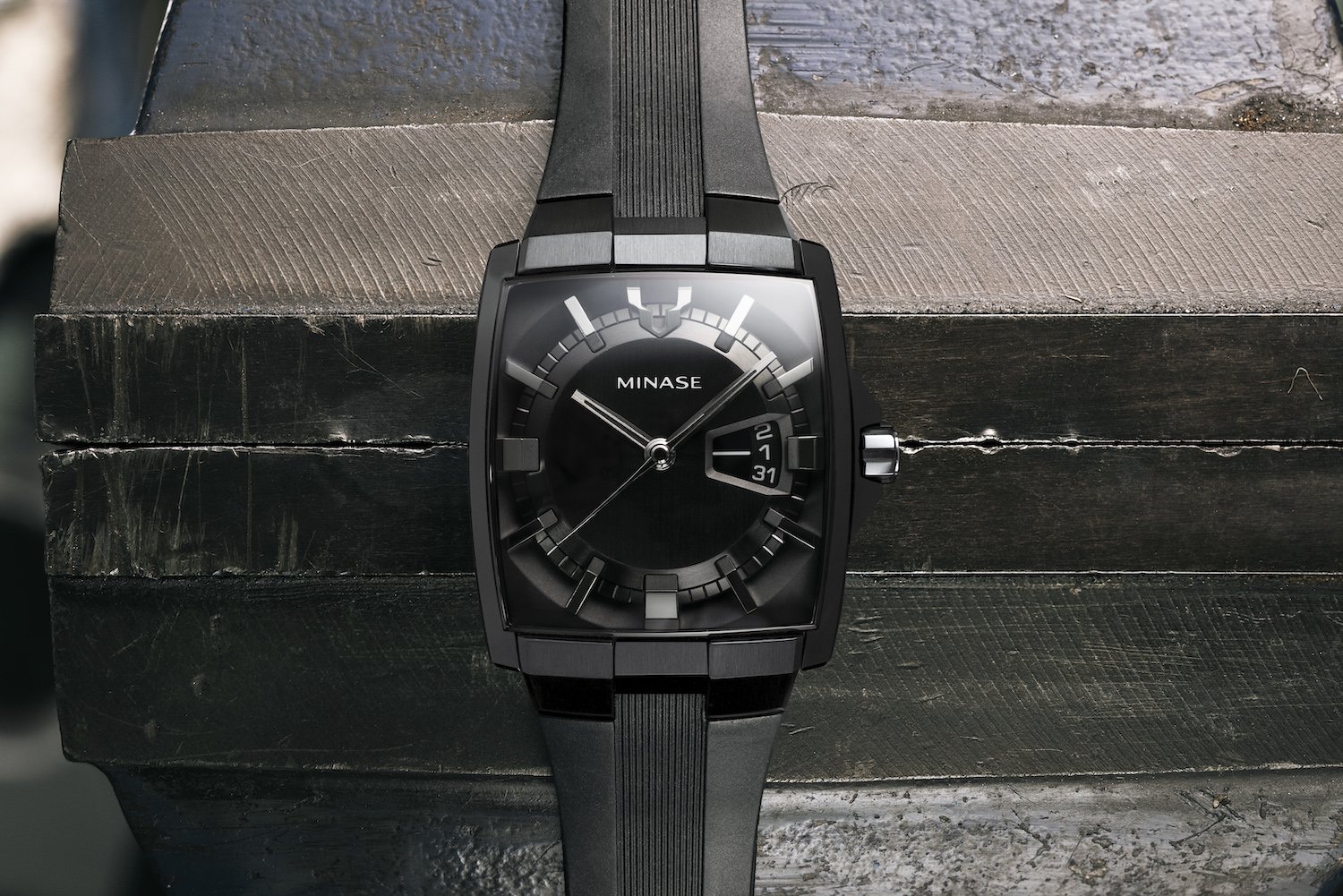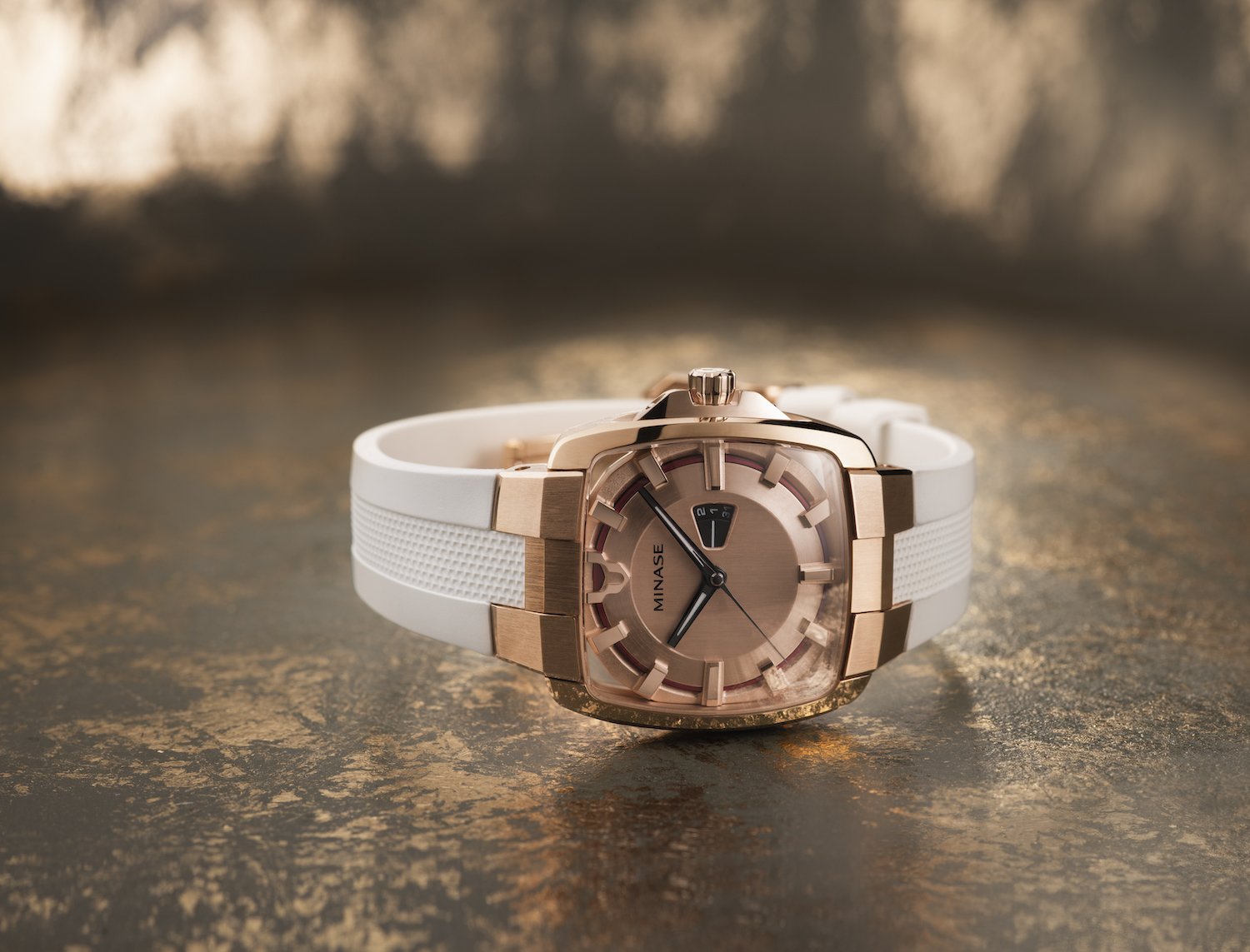t is between rocks and hot springs, along a river in Akita province, in northern Japan, that Minase has found its identity: transparency, plays of light and intriguing case construction. It’s an “ode to nature” in the horological sense, using manufacturing tools that are fully in line with the country’s tradition of technological innovation.
-

- Akita province in northern Japan is home to a large number of hot springs.
Indeed, everything started from a cutting instrument invented by the father of the current CEO Tsuyoshi Suzuki in 1964, which can still be seen today in the Minase logo. At the age of 15, the young engineering enthusiast left his native province to work in a technical tool manufacturing plant in Tokyo. A few years later, he founded his own company near the capital.
Everything started from a cutting instrument invented by the father of the current CEO Tsuyoshi Suzuki in 1964.
An innovative supplier
However, the skilled workforce was insufficient to meet the growing demand and he chose to relocate the company to Akita province in 1973. Today, some 45 people are still employed in the specialised tool company Kyowa, whose production is exported to the United States and Europe for watch brands and other industries such as the automotive and semiconductor industries.
Kyowa’s specialty is a cutting tool with a particular shape, which allows it to perform two operations in one. This powerful tool is used by watchmakers to pierce the space housing the watch crown. In the beginning, the company just sold the tool, but over time it began to perform the cutting operation on watch cases for the brands, and then to produce watch cases directly on their behalf. One of the company’s first customers was none other than Orient (see our article here).
One of the company’s first customers was none other than Orient.
A watch company is born
Minase, a spin-off of Kyowa, was created as a supplier of watch cases in 1988, in the town of the same name in Akita province. Now employing 25 people, it evolved into a private label company – an activity it still carries out for several Japanese companies – before launching its own watch brand in 2005. And so it evolved… from the cutting tool to the finished product.
The brand produces between 600 and 700 timepieces per year at an average price of 3,000 to 4,000 francs. Seeking to increase its international profile, it currently has 35 points of sale in Japan and three abroad: one in Bern, one in Abu Dhabi and one in Paris.
The brand produces between 600 and 700 timepieces per year at an average price of 3,000 to 4,000 francs.
-

- Conceived of pure and simple drawn lines, the Horizon collection “reminds us of the clean cuts of a Japanese sword, a Katana”.
Minase’s output is characterised by models with a wellworked architecture, operating on a highly original basic principle: inserting a case inside another case, which gives an impression of both depth and transparency.
The flagship lines are Dividio, with its formal elegance, Horizon, a square-shaped watch, and 5 Windows, which best embodies the brand’s spirit. Minase has also launched a limited edition of 40 pieces called 7 Windows, a highend model based on a Technotime movement.
Minase’s output is characterised by models with a wellworked architecture.
-

- The 5 Windows collection is Minase’s flagship line. Visible through the 5 sapphire windows, the movement, the three-dimensional dial and the hands seem to be floating in space.
Sallaz polishing technique
The brand has introduced a concept of interchangeable parts, which makes it possible to combine different basic components, thereby easily customising the watches. This system also offers advantages for aftersales service, when it comes to replacing parts.
Another distinctive feature of Minase is its use of the so-called “Sallaz” method of polishing the case. The cases are worked by hand, which gives them a structure that is both brilliant and delicate. The strap is also made on-site by the company.
With its refined artisanal production, Minase is one brand that deserves to be followed closely in the ongoing evolution of Japanese watchmaking. Few independents are in fact able to compete in a country dominated by watchmaking conglomerates.
